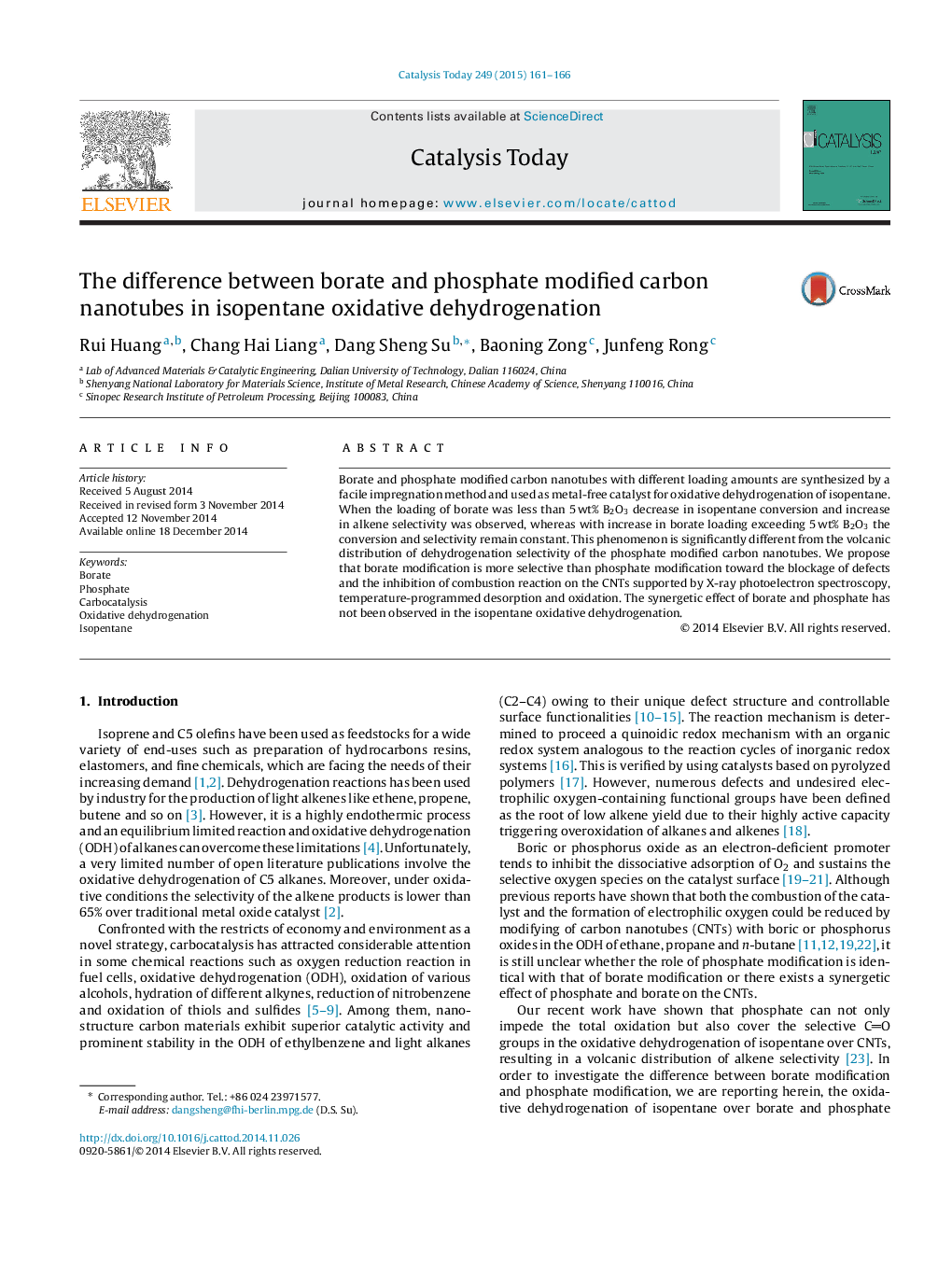| Article ID | Journal | Published Year | Pages | File Type |
|---|---|---|---|---|
| 53722 | Catalysis Today | 2015 | 6 Pages |
•We compare the differences between borate and phosphate modified CNTs.•Increasing P-loading presents a volcanic distribution in alkene selectivity.•Increasing B-loading presents a platform distribution in alkene selectivity.•Borate is more selective than phosphate to the blockage of active sites.•The synergetic effect of borate and phosphate co-loaded CNTs has not been found.
Borate and phosphate modified carbon nanotubes with different loading amounts are synthesized by a facile impregnation method and used as metal-free catalyst for oxidative dehydrogenation of isopentane. When the loading of borate was less than 5 wt% B2O3 decrease in isopentane conversion and increase in alkene selectivity was observed, whereas with increase in borate loading exceeding 5 wt% B2O3 the conversion and selectivity remain constant. This phenomenon is significantly different from the volcanic distribution of dehydrogenation selectivity of the phosphate modified carbon nanotubes. We propose that borate modification is more selective than phosphate modification toward the blockage of defects and the inhibition of combustion reaction on the CNTs supported by X-ray photoelectron spectroscopy, temperature-programmed desorption and oxidation. The synergetic effect of borate and phosphate has not been observed in the isopentane oxidative dehydrogenation.
Graphical abstractFigure optionsDownload full-size imageDownload high-quality image (190 K)Download as PowerPoint slide
